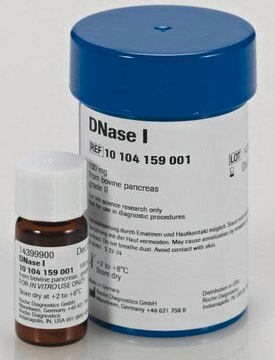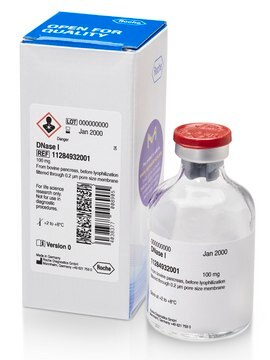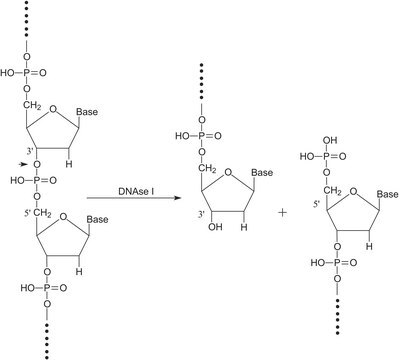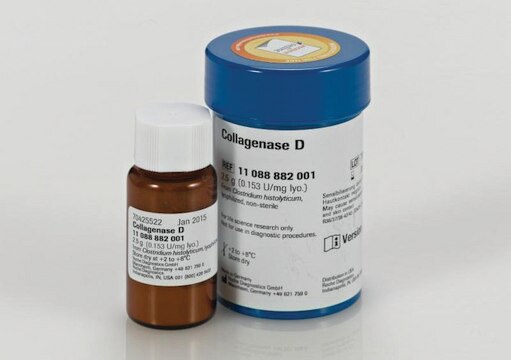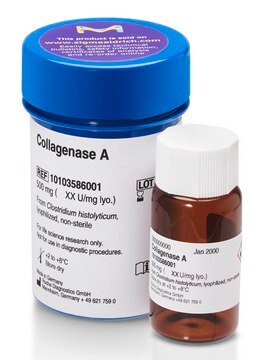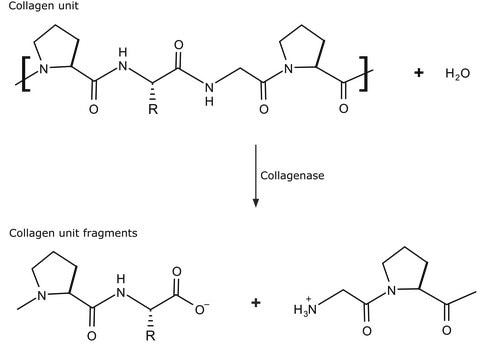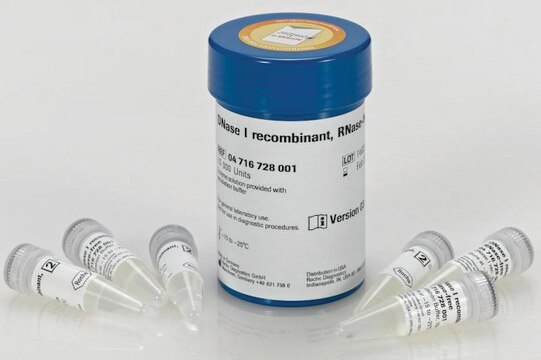B20221
Collagenase-DNase I blend
Tissue dissociation blend, lyophilized powder, suitable for cell culture
Sign Into View Organizational & Contract Pricing
All Photos(1)
About This Item
UNSPSC Code:
12352204
Recommended Products
Quality Level
form
lyophilized powder
specific activity
(Collagenase (FALGPA assay) 1.0-5.0 units/ml in 10 ml HBSS (#H6648))
(Deoxyribonuclease I activity: 200-2000 Kunitz units/ml in 10 ml HBSS (#H6648))
storage temp.
-10 to -25°C
Related Categories
General description
The collagenase-DNase I blend is a tissue dissociation enzyme cocktail for cell isolation. The tissue dissociation process consists in the release of functional and viable cells from animal tissue, with minimal impact on the cell’s viability. The main reagent used for the tissue dissociation process is Collagenase. Collagenases are enzymes that break down the native collagen that holds animal tissues together. The second enzyme found in our blend is Deoxyribonuclease I (DNase I). DNase I, is an endonuclease of the DNase family, with a specific role for the degradation of DNA. DNase I is one of the most well characterized endonucleases of mammalian origin. During tissue dissociation, parts of the cells are lysed resulting in a release of DNA. Monomolecular DNA may cause clumping of cells, so addition of DNase I to our blend leads to a degradation of this extracellular DNA, thereby avoiding the loss of cells from undesired clumping.
Biochem/physiol Actions
Collagenase: Effective release of cells from tissue requires the action of collagenase enzymes. Collagenase is activated by four-gram atom calcium (Ca2+) per mole enzyme. The pH optimum is 6.3-8.8. The enzyme is typically used to digest the connective components in tissue samples to liberate individual cells. Collagenase treatment can cause some cells to die. Typically, concentrations varying from 0.1 to 5 mg/mL are used for digestion. The duration of reaction varies from 15 minutes to several hours and yields satisfactory cell dissociation without causing too much cell death. DNase: DNase I is an endonuclease that acts on phosphodiester bonds adjacent to pyrimidines to produce polynucleotides with terminal 5′-phosphates. In the presence of Mg2+, DNAse I cleaves each strand of DNA independently and the cleavage sites are random. Both DNA strands are cleaved at approximately the same site in the presence of Mn2+. The pH optimum is found to be between 7 and 8. Divalent cations such as Mn2+, Ca2+, Co2+, and Zn2+ are activators of the enzyme. A concentration of 5 mM Ca2+ stabilizes the enzyme against proteolytic digestion. DNAse I from bovine pancreas consists of four chromatographically distinguishable components, A, B, C, and D, with their molar ratios being 4:1:1. Only minor amounts of D are found. 2-Mercaptoethanol, chelators, sodium dodecyl sulfate (SDS) and actin are known to inhibit the enzyme activity.
Preparation Note
For a working concentration of: Collagenase of 1 mg/ml and Deoxyribonuclease I of 0.1 mg/ml, reconstitute the lyophilized powder with 10 ml of Hank’s Balanced Salt solution with sodium bicarbonate, without phenol red, calcium chloride and magnesium sulfate (#H6648)
signalword
Danger
hcodes
pcodes
Hazard Classifications
Resp. Sens. 1
Storage Class
13 - Non Combustible Solids
wgk_germany
WGK 2
flash_point_f
Not applicable
flash_point_c
Not applicable
Certificates of Analysis (COA)
Search for Certificates of Analysis (COA) by entering the products Lot/Batch Number. Lot and Batch Numbers can be found on a product’s label following the words ‘Lot’ or ‘Batch’.
Already Own This Product?
Find documentation for the products that you have recently purchased in the Document Library.
Our team of scientists has experience in all areas of research including Life Science, Material Science, Chemical Synthesis, Chromatography, Analytical and many others.
Contact Technical Service